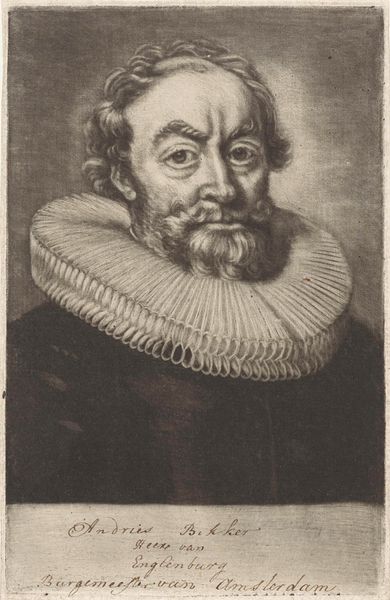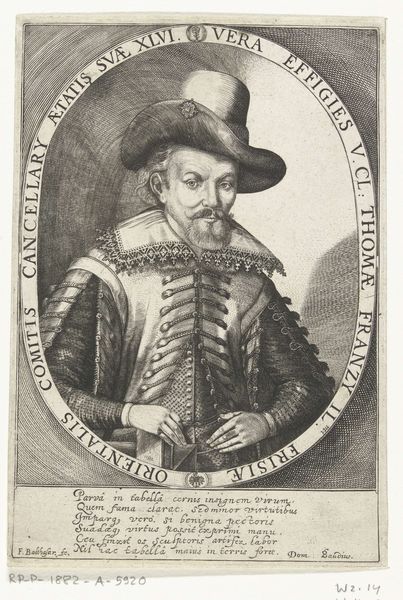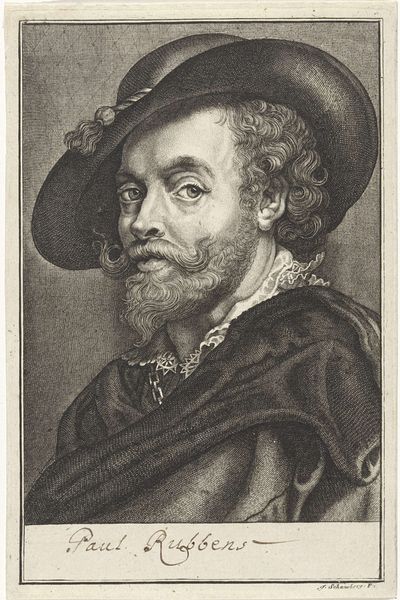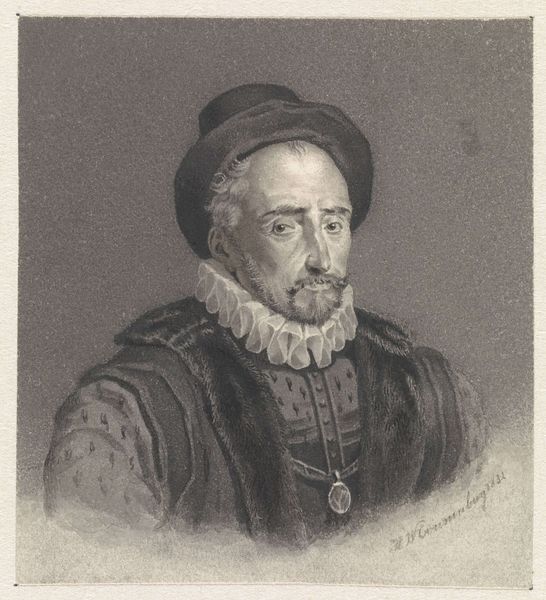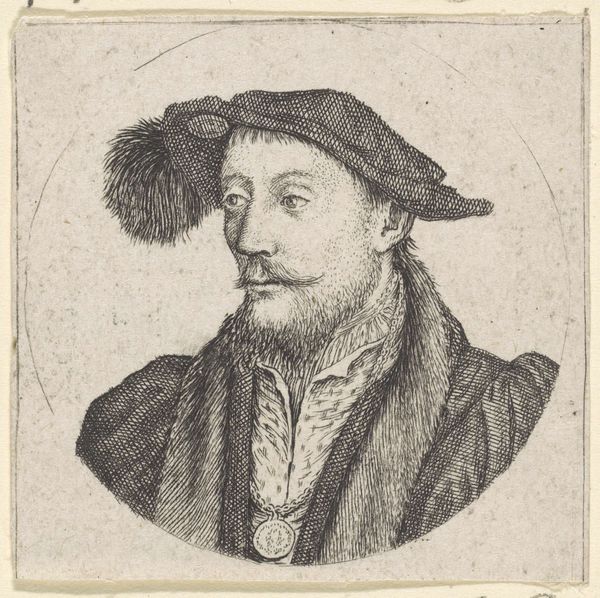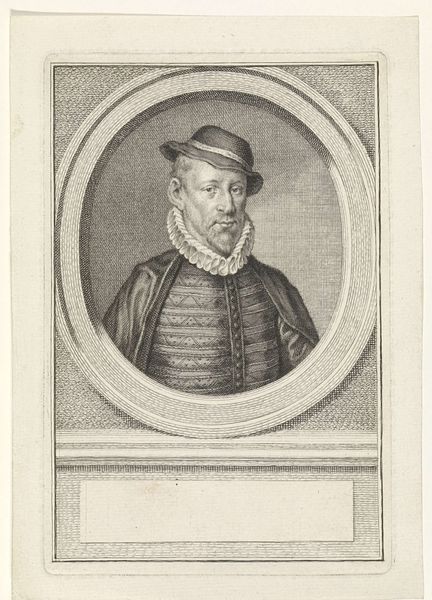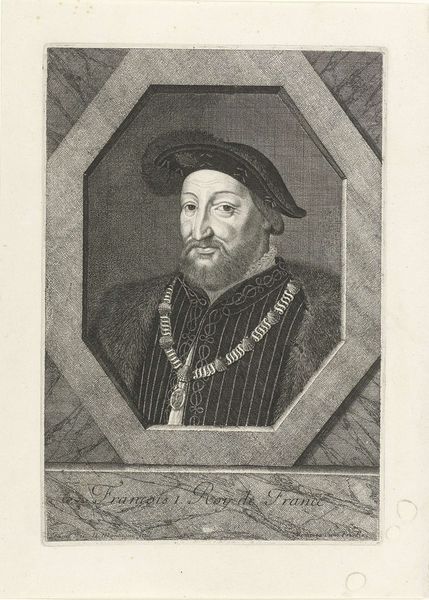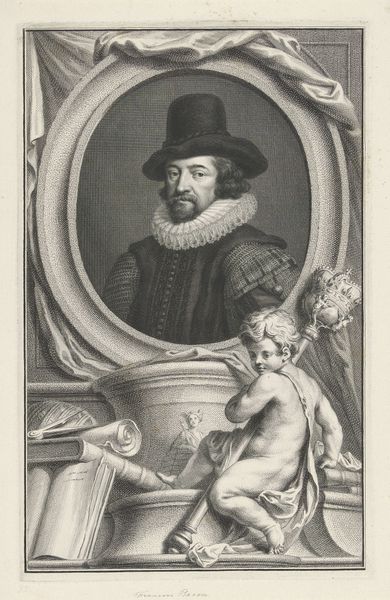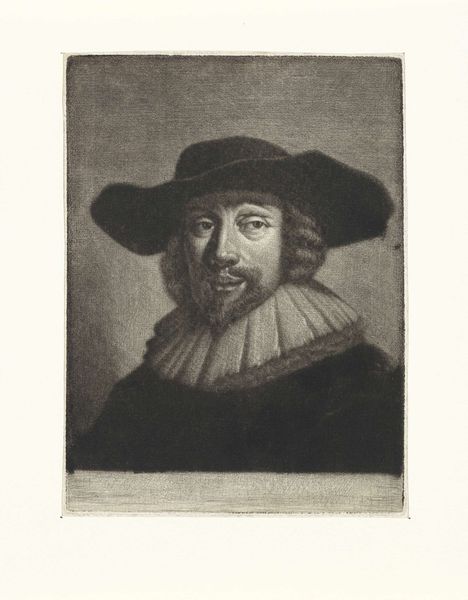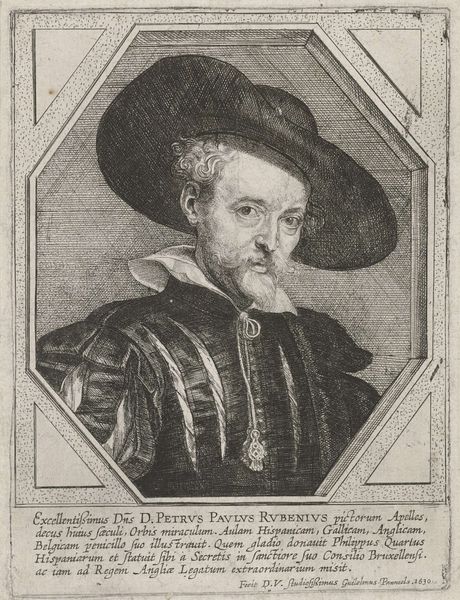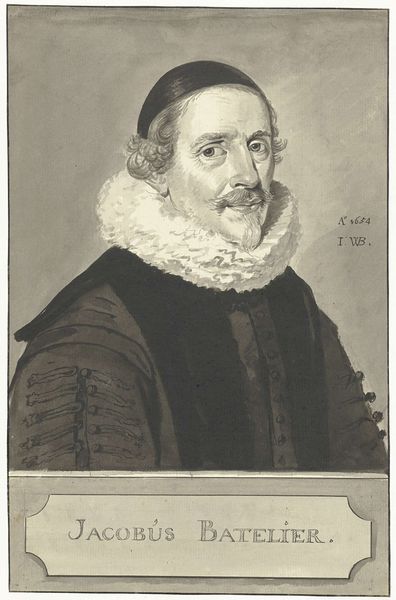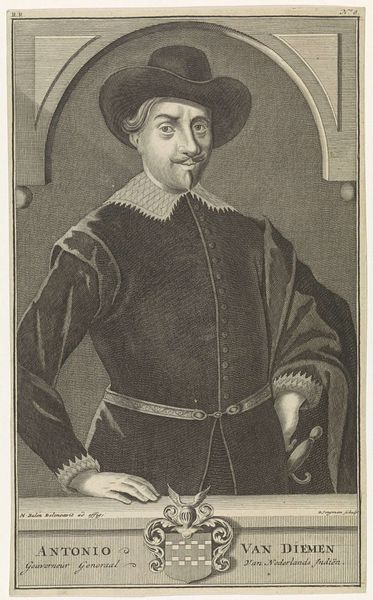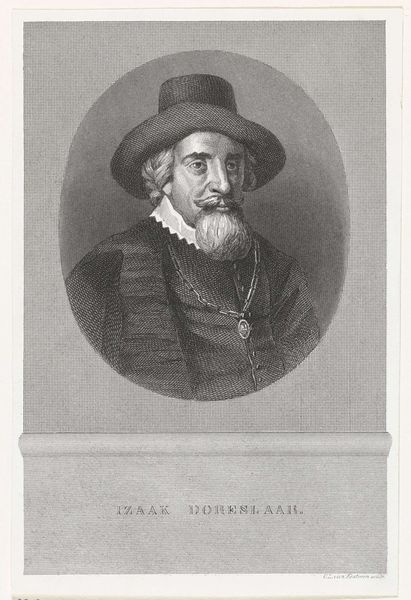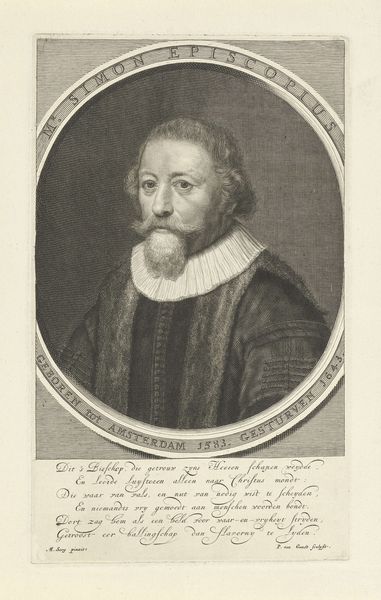
print, engraving
#
portrait
#
baroque
# print
#
engraving
Dimensions: height 282 mm, width 204 mm
Copyright: Rijks Museum: Open Domain
Curator: This is a later rendering, dating from between 1752 and 1762, of a portrait of the artist Peter Paul Rubens, currently held here at the Rijksmuseum. The original artist of this baroque style portrait is Carlo Gregori. He created this through printmaking and engraving. Editor: My first impression? Well, the engraving, whilst undoubtedly skillful, gives it an almost mass-produced feel. It lacks, dare I say it, the soul of a painting directly rendered by a painter. It almost seems too evenly printed and impersonal. Curator: But think about the socio-political implications of printmaking, particularly engravings like this. They democratize images! While only a wealthy elite could commission or acquire an original Rubens, prints could circulate his likeness—and by extension, his genius—to a far wider audience. This impacts how people consume and learn to appreciate his art. Editor: Ah, yes, access and dissemination! A kind of 18th-century visual meme, if you will! And looking at it more closely, you can appreciate the engraver’s craft. The density and fineness of the lines, all those little decisions about pressure, creating textures – you see it in the rendering of his luxurious cloak and also his beard, which feels tactile somehow. This all takes incredible technical skill to control material! Curator: Absolutely. This also speaks to Rubens's enduring fame and cultural significance long after his death. By the mid-18th century, commissioning a print of Rubens reinforces the taste and cultural values of that era. The portrait itself is quite formal, presenting Rubens in a manner befitting his status within artistic circles and broader society. He’s not only an artist, he’s a public figure now, and he must adopt to look the part. Editor: But it does pose an interesting challenge for a materialist approach, doesn't it? Reinterpreting and reproducing art that relies almost entirely on skilled hand-craft, while taking into account mass consumerism… quite tricky. However, you're right; It provides an interesting context on accessibility and democratization. Curator: Yes, these kinds of images give art visibility! Considering the date of the image and that this artwork is still admired today says a lot. Thank you for highlighting the materials, this shows what a legacy he made as an artist! Editor: And on that note, hopefully, the conversation here also helps others reconsider what they see when approaching art. Thanks!
Comments
No comments
Be the first to comment and join the conversation on the ultimate creative platform.
